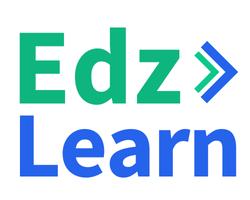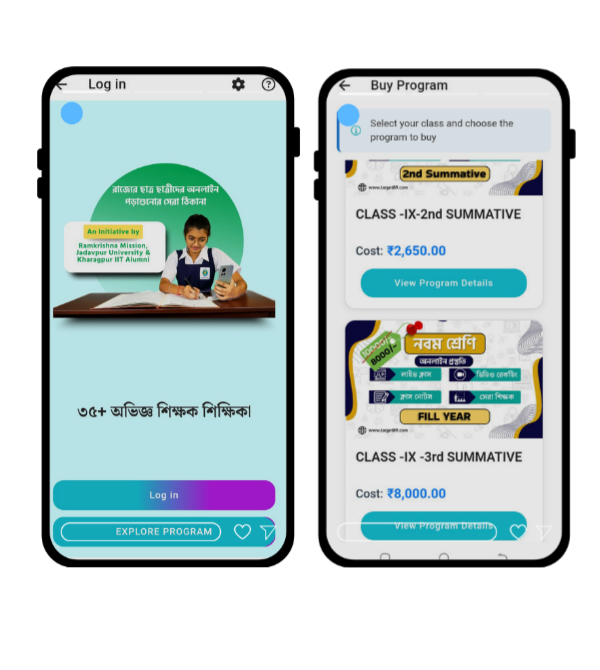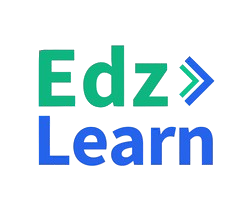Social Learning in LMS is a fundamental concept that emphasizes the importance of learning from and with others. It leverages social interactions and collaborations to enhance the learning process, making it a crucial component of modern Learning Management Systems (LMS). At its core, social learning theory, pioneered by Albert Bandura, posits that people learn from observing, imitating, and modeling the behaviors of others. This principle is increasingly relevant in today’s LMS platforms, which strive to create more engaging and interactive learning environments.
Incorporating social learning into an LMS involves integrating features that facilitate collaboration and peer-to-peer interactions. These features might include discussion forums, social feeds, group projects, and collaborative tools that allow learners to share insights, ask questions, and provide feedback. By embedding these elements into the LMS, organizations can create a more dynamic learning environment where users actively participate in the learning process rather than passively consuming content.
Moreover, Social Learning in LMS can lead to increased motivation and engagement. When learners can connect with peers, share their experiences, and receive feedback, they often find the learning process more meaningful and relevant. This interaction not only reinforces the content but also helps learners develop critical thinking and problem-solving skills as they navigate discussions and collaborative tasks. Integrating social learning into an LMS is therefore not just about adding features but about creating a community where learners can thrive and grow through interaction and shared experiences.
Why Social Learning Enhances the Learning Experience in LMS Platforms
Social learning significantly enhances the learning experience in LMS platforms by creating a more interactive and engaging environment. Traditional learning methods often rely on a one-way flow of information from instructor to learner, which can sometimes lead to passive learning. In contrast, social learning encourages active participation and collaboration, which can lead to a deeper understanding of the material and better retention of knowledge.
One of the key benefits of Social Learning in LMS is the ability to tap into the collective knowledge and experiences of the learner community. By engaging in discussions, sharing insights, and working on collaborative projects, learners can gain diverse perspectives and new ideas that they might not encounter through individual study alone. This collaborative approach can lead to more comprehensive learning outcomes and a richer educational experience.
Additionally, social learning helps build a sense of community among learners. When individuals interact with their peers, they often feel more connected and motivated to engage with the content. This sense of belonging can enhance motivation and drive, making learners more likely to complete courses and participate actively in discussions. Social learning also provides opportunities for peer feedback, which can be valuable for improving skills and understanding.
Furthermore, integrating social learning into LMS platforms can lead to more personalized learning experiences. Learners can seek out peers with similar interests or challenges and form study groups or networks that cater to their specific needs. This flexibility allows for a more tailored approach to learning, where individuals can pursue their interests and address their unique learning goals in a supportive, collaborative environment.
Integrating Social Learning Tools: Best Practices for LMS Administrators
Integrating social learning tools into an LMS requires careful planning and implementation to ensure they effectively enhance the learning experience. For LMS administrators, adopting best practices can help create a seamless and impactful integration of these tools.
Firstly, it is essential to select the right social learning in LMS tools that align with the goals and needs of the organization. Popular tools include discussion forums, social feeds, chat functionalities, and collaborative workspaces. Each of these tools offers different benefits, so choosing the ones that best fit the learning objectives and user preferences is crucial.
Secondly, providing clear guidelines and training for both instructors and learners is important. Users should understand how to effectively use the social learning tools, participate in discussions, and engage in collaborative activities. Offering tutorials or workshops on these tools can help ensure that everyone is comfortable and confident in using them.
Another best practice is to foster a positive and inclusive online culture. Encouraging respectful and constructive interactions among learners helps create a supportive environment where everyone feels comfortable sharing their ideas and opinions. Moderation and active monitoring of social interactions can help maintain a positive atmosphere and address any issues that arise.
Furthermore, integrating social learning tools should be accompanied by regular evaluation and feedback. Gathering input from users about their experiences with the tools can provide valuable insights into what is working well and what might need improvement. This ongoing assessment allows administrators to make adjustments and enhancements to better meet the needs of the learners.
Finally, ensuring that social learning in LMS tools are seamlessly integrated with other LMS functionalities is key to providing a cohesive learning experience. The tools should complement and enhance the existing features of the LMS, such as course content and assessments, rather than feeling like separate or isolated components.
Leveraging User-Generated Content for Collaborative Learning in LMS
User-generated content (UGC) plays a significant role in fostering collaborative learning within LMS platforms. By allowing learners to create and share their content, organizations can harness the collective knowledge and creativity of their user community, leading to a more engaging and dynamic learning environment.
One of the primary benefits of UGC is that it provides learners with opportunities to actively contribute to their learning experience. When learners create blog posts, discussion threads, or multimedia presentations, they not only reinforce their own understanding of the material but also provide valuable resources for their peers. This sharing of content can lead to a richer educational experience, as learners benefit from diverse perspectives and insights.
Additionally, UGC encourages peer-to-peer learning and collaboration. Learners can build on each other’s contributions, provide feedback, and engage in discussions about the content created by their peers. This collaborative approach can lead to a deeper understanding of the subject matter and foster a sense of community among learners.
To effectively leverage UGC, LMS administrators should implement features that facilitate content creation and sharing. This might include tools for creating and uploading multimedia content, as well as platforms for discussion and feedback. Providing clear guidelines and support for content creation can also help ensure that users produce high-quality and relevant materials.
It is also important to acknowledge and reward valuable contributions. Recognizing the efforts of learners who create and share high-quality content can motivate others to participate and contribute. This recognition can take various forms, such as badges, certificates, or public acknowledgment within the LMS.
Creating Interactive Learning Communities within Your LMS Platform
Creating interactive learning communities within an LMS platform involves designing and implementing features that encourage active engagement, collaboration, and communication among learners. These communities can greatly enhance the learning experience by providing a space for users to connect, share knowledge, and support each other.
One effective way to build interactive learning communities is through the use of discussion forums. These forums allow learners to ask questions, share insights, and engage in conversations about course content. By participating in these discussions, learners can benefit from diverse perspectives and deepen their understanding of the material. Moderators and instructors can also play a role in guiding conversations and ensuring that discussions remain productive and relevant.
Another important feature is the integration of group projects and collaborative tools. These tools enable learners to work together on assignments, share resources, and provide feedback to one another. Collaborative projects can help learners develop teamwork and communication skills while also reinforcing their understanding of the course content.
Social feeds and activity streams are also valuable for creating interactive communities. These features allow users to post updates, share achievements, and interact with each other in real-time. This dynamic interaction helps build a sense of community and keeps learners engaged with the course.
Additionally, incorporating gamification elements, such as leaderboards and challenges, can further enhance engagement. By introducing elements of competition and reward, learners are motivated to participate more actively and contribute to the community.
Finally, providing opportunities for informal interactions, such as virtual meetups or networking events, can help strengthen connections between learners. These informal settings allow users to build relationships and foster a sense of camaraderie beyond the formal learning environment.
How Social Learning Features Can Drive Engagement and Retention
Social learning features have a profound impact on engagement and retention within LMS platforms. By incorporating elements such as discussion forums, social feeds, and collaborative projects, LMS platforms can create an interactive learning environment that encourages active participation and sustained interest.
Engagement is significantly enhanced when learners have opportunities to interact with their peers. Discussion forums and social feeds allow users to ask questions, share ideas, and provide feedback, which can lead to richer and more meaningful learning experiences. When learners see that their contributions are valued and receive responses from their peers, they are more likely to remain engaged with the course content.
Moreover, collaborative projects and group activities foster a sense of community and belonging. Working on assignments with peers not only reinforces the material but also helps learners build relationships and develop teamwork skills. This collaborative approach can lead to increased motivation and a greater investment in the learning process, as learners feel more connected to their peers and the course.
Retention is also positively impacted by social learning features. When learners are actively involved in discussions and group activities, they are more likely to stay committed to the course and complete it. The sense of accountability and connection that comes from engaging with a learning community can reduce dropout rates and encourage learners to persist through challenges.
Additionally, social learning features can provide valuable feedback and support, which can enhance learner satisfaction and success. By receiving feedback from peers and participating in collaborative problem-solving, learners can gain insights and improve their understanding of the material. This continuous support helps maintain engagement and encourages learners to stay focused on their educational goals.
Utilizing Discussion Forums and Social Feeds to Foster Peer Interaction
Discussion forums and social feeds are essential tools for fostering peer interaction within LMS platforms. These features create spaces for learners to engage in meaningful conversations, share insights, and collaborate on learning activities, thereby enhancing the overall learning experience.
Discussion forums allow learners to post questions, share their thoughts, and participate in conversations about course content. These forums can be organized by topic or course module, making it easy for users to find relevant discussions and contribute their perspectives. By encouraging active participation, discussion forums help learners deepen their understanding of the material and connect with their peers.
Social feeds, on the other hand, provide a real-time platform for learners to share updates, achievements, and resources. This dynamic feature helps keep learners informed about ongoing activities and fosters a sense of community. Social feeds can also include notifications about new posts, comments, and interactions, which helps maintain engagement and encourages users to stay active in the learning environment.
To maximize the effectiveness of discussion forums and social feeds, LMS administrators should establish clear guidelines for participation and moderation. Ensuring that discussions remain respectful and relevant is crucial for maintaining a positive and productive learning environment. Additionally, providing training and support for both learners and instructors can help users make the most of these features and contribute effectively.
Integrating discussion forums and social feeds into the LMS platform creates opportunities for learners to engage with each other, share knowledge, and collaborate on learning activities. These interactions not only enhance the learning experience but also build a strong sense of community among users.
Implementing Gamification and Social Learning: Strategies for Success
Combining gamification and social learning in LMS can create a powerful and engaging learning environment within an LMS platform. Gamification elements, such as badges, leaderboards, and challenges, can be integrated with social learning features to drive motivation and foster collaboration among learners.
One effective strategy is to incorporate gamified elements into collaborative activities. For example, learners can earn points or badges for participating in discussions, completing group projects, or providing feedback to peers. This recognition not only motivates learners to engage more actively but also reinforces their commitment to the learning process.
Leaderboards are another gamification feature that can be used to foster healthy competition and drive engagement. By displaying the top performers in various learning activities, such as discussions or assignments, learners are encouraged to participate more actively and strive for improvement. Leaderboards can also be tailored to different criteria, such as teamwork or creativity, to highlight diverse contributions and achievements.
Challenges and quizzes can be gamified to enhance the learning experience further. By creating competitive elements and incorporating social features, such as team-based challenges or peer-reviewed quizzes, learners can engage with the material in a fun and interactive way. These gamified elements not only increase motivation but also provide opportunities for collaboration and peer learning.
To successfully implement gamification and social learning in LMS, it is essential to align the gamified elements with the learning objectives and ensure they support the overall educational goals. Providing clear instructions and feedback on how to earn rewards and participate in challenges helps learners understand how to engage effectively and make the most of these features.
Measuring the Impact of Social Learning on LMS Effectiveness
Measuring the impact of social learning in LMS effectiveness involves evaluating various metrics and feedback to assess how social learning features influence learner engagement, performance, and overall satisfaction. By analyzing these factors, organizations can determine the value of social learning components and make informed decisions about their integration.
One key metric to consider is learner engagement. Tracking participation rates in discussion forums, social feeds, and collaborative activities can provide insights into how actively learners are interacting with the social learning features. Higher engagement levels often indicate that the features are effectively facilitating communication and collaboration among users.
Another important aspect to measure is learner performance. Assessing the impact of social learning on academic outcomes, such as course completion rates and grades, can help determine whether these features contribute to improved learning results. Comparing performance data before and after the integration of social learning features can provide valuable insights into their effectiveness.
Learner satisfaction and feedback are also crucial in evaluating the impact of social learning in LMS. Surveys and feedback forms can be used to gather input from users about their experiences with social learning tools. This feedback can help identify areas for improvement and ensure that the features are meeting the needs and preferences of the learners.
Additionally, analyzing the quality of interactions and contributions within social learning features can provide insights into their impact. Reviewing the relevance and usefulness of discussion posts, peer feedback, and collaborative outputs can help assess how effectively these features support the learning process.
Future Trends: The Role of Social Learning in Evolving LMS Platforms
The role of social learning in LMS platforms is becoming increasingly significant as educational technology continues to advance. Future trends indicate that social learning will play a crucial role in shaping the next generation of LMS platforms by enhancing interactivity, collaboration, and personalized learning experiences.
One emerging trend is the integration of artificial intelligence (AI) and machine learning with social learning features. AI can be used to analyze learner interactions and provide personalized recommendations for content, connections, and learning paths. This integration can help create a more tailored learning experience by suggesting relevant discussions, resources, and peer interactions based on individual preferences and behavior.
Virtual and augmented reality (VR and AR) are also expected to impact social learning in LMSplatforms. These technologies can provide immersive and interactive experiences that facilitate collaborative learning in virtual environments. For example, VR can be used to create virtual classrooms or simulations where learners can interact with each other and engage in hands-on activities.
Additionally, the use of data analytics and learning analytics will become more prevalent in evaluating the effectiveness of social learning features. Advanced analytics tools can provide insights into learner behavior, engagement patterns, and the impact of social interactions on learning outcomes. This data-driven approach will help organizations make informed decisions about the design and implementation of social learning in LMS components.
Overall, the future of social learning in LMSplatforms will be characterized by greater interactivity, personalization, and integration with emerging technologies. These trends will continue to shape the way learners interact, collaborate, and engage with educational content, leading to more dynamic and effective learning environments.
Conclusion
Integrating social learning features into LMS platforms offers numerous benefits, including increased engagement, improved retention, and enhanced learning experiences. By leveraging tools such as discussion forums, social feeds, and collaborative projects, LMS platforms can create dynamic environments where learners actively participate and collaborate. Gamification and user-generated content further contribute to a more engaging and interactive learning experience. Measuring the impact of these features and staying abreast of future trends, such as AI and VR, will help organizations optimize their LMS platforms to meet the evolving needs of learners. Ultimately, social learning in LMS is a powerful component that can transform LMS platforms, making them more effective and responsive to the demands of modern education.
This Blog is Written By Ritika Sexena, Content Writer and Social Media Manager at Edzlearn Services PVT LTD.
For More Information Connect With Her on Linkedin : https://www.linkedin.com/in/ritika-saxena0355/
Read our Recent Blogs: https://edzlms.com/blogs/
Download our Recent Case Study: https://edzlms.com/case-study/
For anything related to LMS, feel free to reach out or book an appointment at















